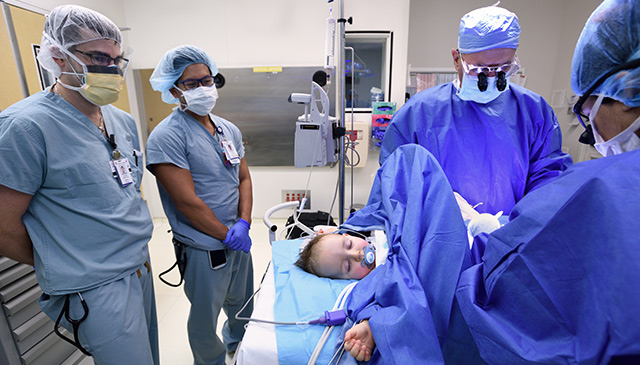September 14, 2020

We can do just about anything these days with our smartphones. We can send and receive emails, make online purchases, connect with family and friends on social media, schedule doctors appointments and even access our medical health records, thanks to smartphones and modern software applications.
In our IT driven world, patient and provider communication should be conducted quickly, securely and conveniently, especially when it comes to accessing and exchanging electronic health information.
In 2016, The Office of the National Coordinator (ONC) for Health Information Technology passed federal legislation called the 21st Century Cures Act Final Rule that puts patients in charge of their health care by allowing them to access their electronic health information more easily through the use of smart phone applications of their choice. The interoperability, information blocking, and patient access to data and electronic health record certification requirements outlined in the 21st Century Cures Act will go into effect in multiple phases and will impact our patients, health care providers and health IT software developers.
Information blocking provision
The Information Blocking provision under the 21st Century Cures Act is the first phase that will go into effect on November 1, and will impact access, exchange or use of electronic health information. The Information Blocking rule will apply to patient portals and applications – like MyChart, Care Everywhere and EpicCare Link – where a patient can easily access their medical records online. However, the rule does not apply to Texas Children’s traditional medical record information release process, where a patient has to go through the Medical Records Office to request copies of their personal health information.
Some of the core data elements that will require autorelease through our patient portals include allergies, assessment and plan of treatment, clinical notes, clinical care teams, health concerns, immunizations, lab results, medication, demographics, procedures, unique device identifiers for implants, and vitals data.
“Under the new rule, health care providers could be liable for information blocking if they do not release this data through these patient portals,” said Brian Stanford, Director of Health Information Management. “Right now, most of this data is not automatically released. Starting in November, we will be required to release this data via MyChart and other patient portals to make it more accessible so patients don’t have to go through the traditional medical record release process to obtain a copy of their health information.”
While there are a few exceptions to the information blocking rule – for instance, psychotherapy clinical notes are exempt from being automatically released into a patient’s electronic health record – this new process of information sharing will be a culture change for our health care providers and our patients.
“Our providers are used to reviewing health reports first before contacting their patient to discuss the results and plan of care,” said Maggie Weimer, Practice Administrator for Transition Medicine. “Now that this health information will be released automatically into the patient portal, a patient could access this information before their provider has had the chance to reach out to them to discuss their results. This change can come as a shock to the patient, especially if there is a particularly sensitive diagnosis.”
Preparing the organization
To prepare and educate the organization about the Cures Act, a workgroup has been assembled to carefully review the regulation, review our policies, procedures and business practices, and develop a systemwide communication plan to ensure our providers are compliant with this new federal regulation.
“With regard to information blocking exceptions, we are working with our legal department to carefully review certain situations where we could block the autorelease of information if the provider feels that releasing this information could potentially cause reasonable harm to the patient,” said Stanford. “We are collaborating with our IS team, senior executive leadership, and our MyChart and patient information exchange workgroups to help us evaluate and determine what our obligations are around the Cures Act.”
Several other changes on the horizon
In addition to the ONC Final Rule, The Center for Medicare and Medicaid Services (CMS) Final Rule includes additional requirements primarily for payers, that are also intended to increase interoperability.
- CMS Event Notifications – Starting May 2021, providers will be required by law to notify the patient’s primary care physician whenever a patient is admitted, discharged or transferred. For example, a notification that a patient has left a hospital can prompt a physician to take steps to provide appropriate follow-up care. These notifications have been shown to significantly reduce how often patients return to emergency departments after discharge from the hospital.
- Patient Access API: Beginning July 1, 2021, CMS-regulated payers (including Medicaid MCOs) are required to implement a secure, standards based application programming interface (API) that allows patients to access their claims, encounter information as well as certain clinical data.
- CMS Payer-to-Payer Data Exchange – This provision will require CMS-regulated payers to share certain clinical data with each other and other payers. This allows the patient to take their information with them as they move from payer to payer over time to help create a cumulative health record with their current payer. Having a patient’s health information in one place will facilitate informed decision-making, efficient care, and lead to better health outcomes. CMS-regulated payers must implement processes for this data exchange beginning January 2022.
“As more provisions go into effect in the upcoming year, our Cures Act workgroup team will continue to meet regularly to ensure the organization is informed, prepared and compliant,” said Weimer. “We are working with our internal partners and Marketing to help us facilitate timely communications as needed.”
Stay tuned to Connect for more updates on the Cures Act and the organization’s implementation efforts.
























